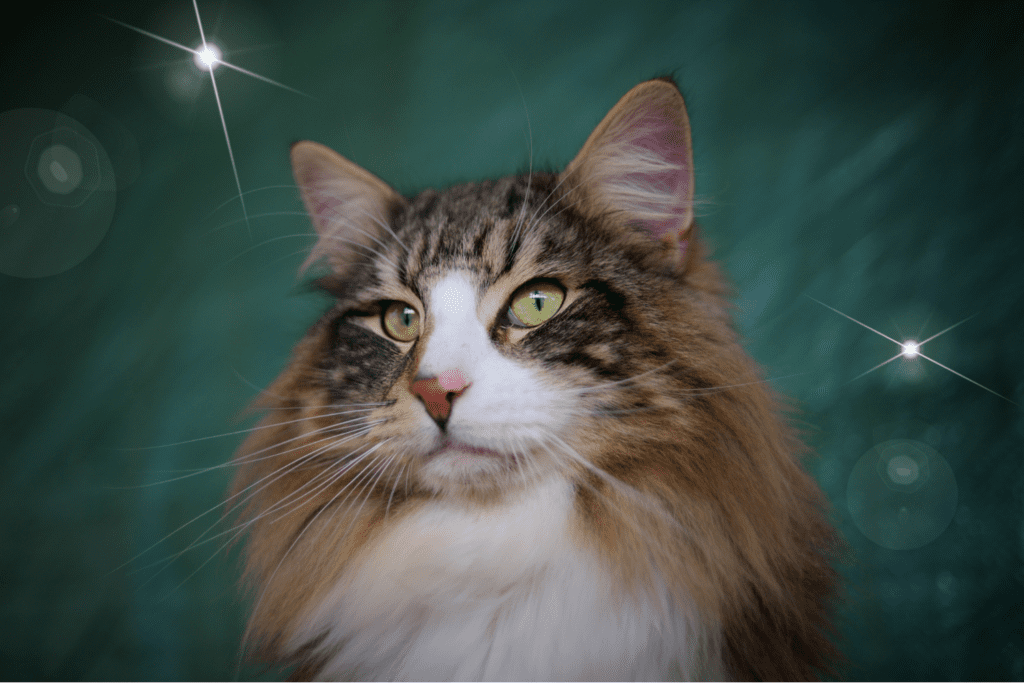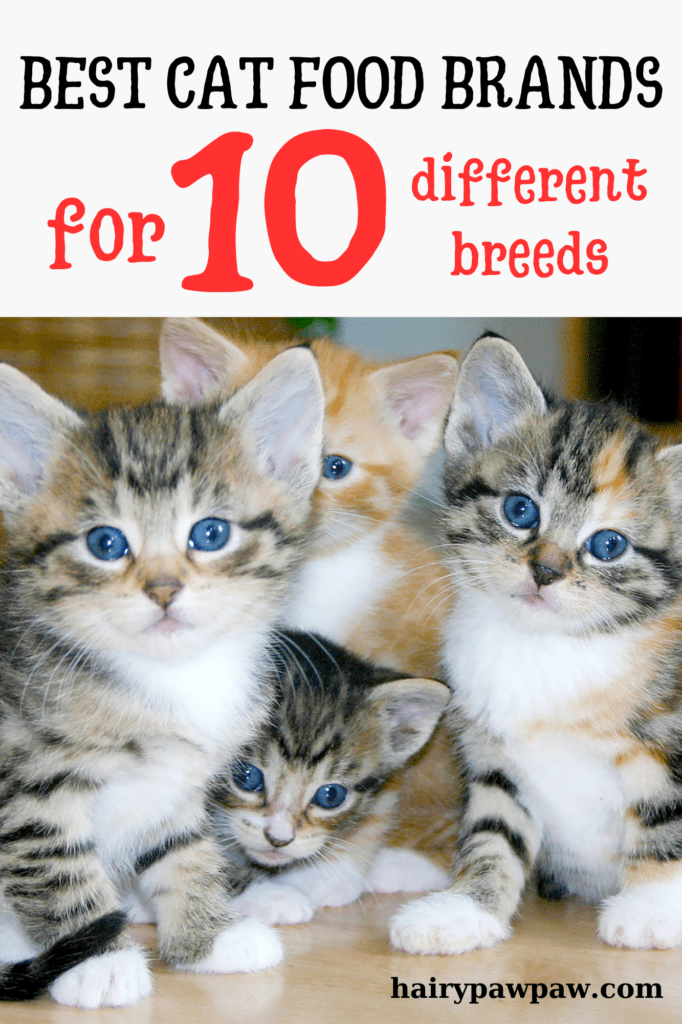This “The Fascinating History of Norwegian Forest Cats” post may contain affiliate links, which means I’ll receive a commission if you purchase through my link, at NO EXTRA COST TO YOU
The Fascinating History of Norwegian Forest Cats
The Norwegian Forest Cat holds a rich historical and mythical background, renowned for its regal look and amiable nature. Its origins are as captivating as its physical beauty, embodying a fusion of natural adaptation and cultural importance. Delve into the extensive history and beginnings of the Norwegian Forest Cat, tracing its voyage from ancient Norway to its revered status as a cherished companion across the globe.

1. Ancient Origins
Natural Evolution:
- Historical Roots: The Norwegian Forest Cat is believed to have ancient roots in Scandinavia, with some historians suggesting it has been present for over a thousand years. These cats were likely natural descendants of domestic cats that adapted to the harsh Scandinavian climate.
- Adaptations: Over time, Norwegian Forest Cats developed unique physical characteristics, including their dense double coat, tufted ears, and bushy tail, all of which helped them thrive in the cold Nordic winters.
Myth and Legend:
- Viking Lore: According to Norse mythology, the Norwegian Forest Cat was revered by the Vikings. Some legends suggest that the cats were considered magical creatures, with their strong climbing abilities and hunting skills making them symbols of strength and agility.
- Famous Figures: The breed was also associated with the Norse goddess Freyja, who was said to have ridden in a chariot pulled by large cats, further embedding the Norwegian Forest Cat in regional folklore.

2. Recognition and Development
Early Recognition:
- First Records: The Norwegian Forest Cat began gaining formal recognition in the early 20th century. Cat fanciers and enthusiasts in Norway began to document and breed these cats, emphasizing their unique traits and historical significance.
- Breed Standard: The breed was officially recognized by the Norwegian Cat Fanciers Association in 1938, which helped establish breed standards and promote the Norwegian Forest Cat.
Post-War Development:
- Conservation Efforts: After World War II, the breed faced challenges due to the scarcity of purebred cats and the impact of the war on breeding programs. Dedicated breeders worked to preserve the breed and rebuild its numbers.
- International Recognition: The Norwegian Forest Cat gained international recognition as breeders and enthusiasts in other countries began to take an interest in the breed. It was officially recognized by major cat registries such as the Fédération Internationale Féline (FIFe) and The International Cat Association (TICA) in the latter half of the 20th century.
3. Characteristics and Adaptations
Physical Traits:
- Coat: The Norwegian Forest Cat is renowned for its thick, water-resistant coat, which is double-layered to provide insulation against cold weather. The coat is long and luxurious, with a dense undercoat and a top layer of longer guard hairs.
- Body Structure: The breed is characterized by its large size, robust build, and strong, muscular body. Their tufted ears, bushy tail, and large, expressive eyes are distinctive features that contribute to their striking appearance.
Functional Adaptations:
- Climbing Skills: Norwegian Forest Cats are excellent climbers, a trait that likely evolved to help them hunt and navigate the dense forests of Scandinavia. Their strong legs and sharp claws aid in climbing and exploring their environment.
- Hunting Instincts: The breed’s keen hunting instincts and agility made them valuable companions for farmers and seafarers, helping control rodent populations and providing companionship during long voyages.
YOU CAN ALSO CHECK : Norwegian Forest Cat Characteristics: Everything You Need to Know

4. The Norwegian Forest Cat Today
Modern Popularity:
- Companion Animals: Today, Norwegian Forest Cats are cherished for their friendly and adaptable nature. They make excellent family pets and are known for their gentle demeanor and playful behavior.
- Exhibition Success: The breed continues to enjoy success in cat shows and exhibitions, where their impressive appearance and elegant demeanor are celebrated.
Conservation and Breeding:
- Ethical Breeding: Efforts to preserve the breed’s health and maintain its historical traits continue through ethical breeding practices and genetic research.
- Cultural Significance: The Norwegian Forest Cat remains a symbol of Norway’s natural beauty and cultural heritage, celebrated in literature, art, and popular media.
YOU CAN ALSO CHECK : Norwegian Forest Cat Lifespan: Tips for a Healthy and Fulfilling Life
Conclusion
The Norwegian Forest Cat’s resilience, adaptability, and cultural importance are evident in its history and origin. Originating in Scandinavia and now cherished as a breed, the Norwegian Forest Cat represents a heritage shaped by natural evolution and folklore. Appreciating this history heightens admiration for its majestic beauty and emphasizes the need to protect its distinctive characteristics and legacy. As a companion or cultural symbol, the Norwegian Forest Cat remains captivating and inspiring, connecting the past and present. Understanding the breed’s history not only enhances appreciation for its majestic appearance but also underscores the importance of preserving its unique traits and legacy. Whether as a companion or a cultural icon, the Norwegian Forest Cat continues to captivate and inspire, bridging the past with the present. The resilience, adaptability, and cultural importance of the Norwegian Forest Cat are evident in its history and origin. Originating in Scandinavia and now cherished as a breed, the Norwegian Forest Cat represents a heritage shaped by natural evolution and folklore. Appreciating this history heightens admiration for its majestic beauty and emphasizes the need to protect its distinctive characteristics and legacy. As a companion or cultural symbol, the Norwegian Forest Cat remains captivating and inspiring, connecting the past and present.
© Copyright 2024. All rights reserved.






